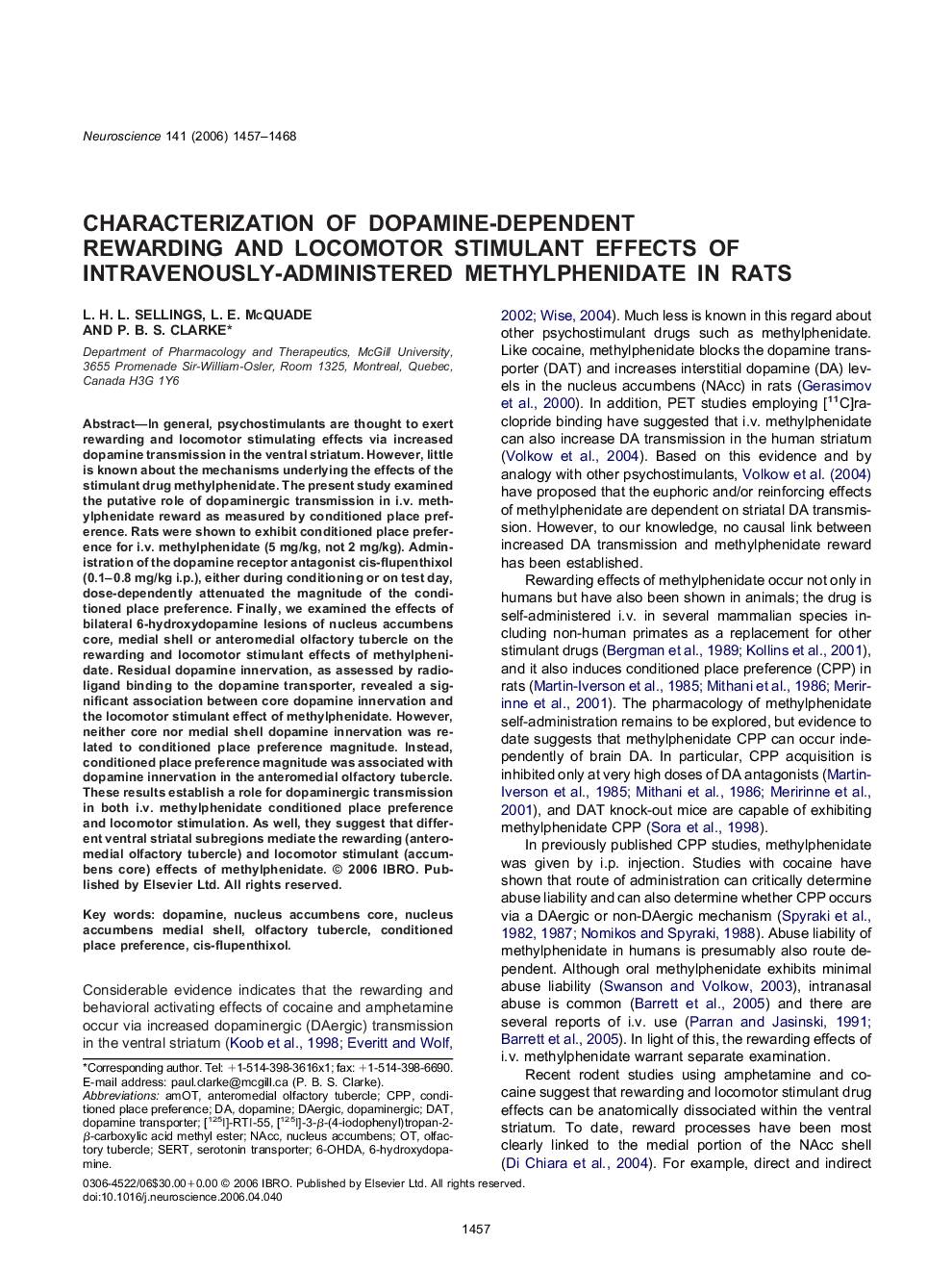| Article ID | Journal | Published Year | Pages | File Type |
|---|---|---|---|---|
| 4342549 | Neuroscience | 2006 | 12 Pages |
In general, psychostimulants are thought to exert rewarding and locomotor stimulating effects via increased dopamine transmission in the ventral striatum. However, little is known about the mechanisms underlying the effects of the stimulant drug methylphenidate. The present study examined the putative role of dopaminergic transmission in i.v. methylphenidate reward as measured by conditioned place preference. Rats were shown to exhibit conditioned place preference for i.v. methylphenidate (5 mg/kg, not 2 mg/kg). Administration of the dopamine receptor antagonist cis-flupenthixol (0.1–0.8 mg/kg i.p.), either during conditioning or on test day, dose-dependently attenuated the magnitude of the conditioned place preference. Finally, we examined the effects of bilateral 6-hydroxydopamine lesions of nucleus accumbens core, medial shell or anteromedial olfactory tubercle on the rewarding and locomotor stimulant effects of methylphenidate. Residual dopamine innervation, as assessed by radioligand binding to the dopamine transporter, revealed a significant association between core dopamine innervation and the locomotor stimulant effect of methylphenidate. However, neither core nor medial shell dopamine innervation was related to conditioned place preference magnitude. Instead, conditioned place preference magnitude was associated with dopamine innervation in the anteromedial olfactory tubercle. These results establish a role for dopaminergic transmission in both i.v. methylphenidate conditioned place preference and locomotor stimulation. As well, they suggest that different ventral striatal subregions mediate the rewarding (anteromedial olfactory tubercle) and locomotor stimulant (accumbens core) effects of methylphenidate.
